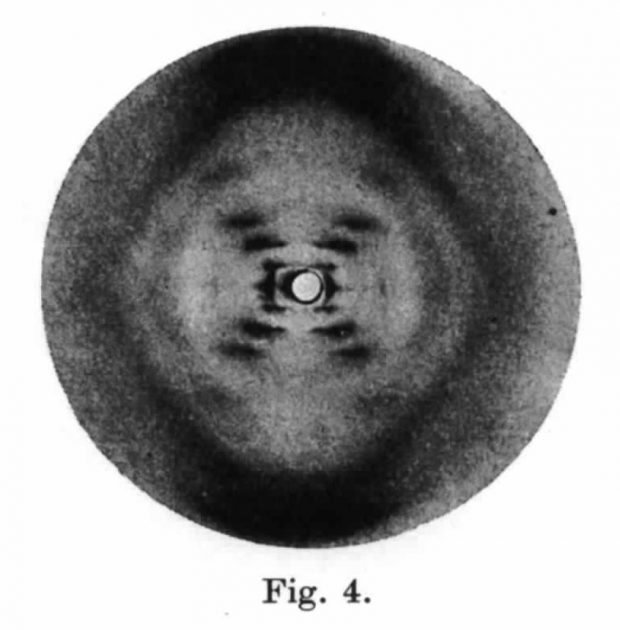It is one of the most famous photos taken by Raimond Gosling (1926-2015), a former student of Wilkins and Franklin, who
is largely forgotten when the story of DNA is told. To mark the anniversary of his paperclip-inspired contribution, Nature has interviewed him. You can hear the results at go.nature.com/lizfik … In this interview, a humble Gosling fondly recalls that Franklin’s response to Crick and Watson’s model of the double helix was gracious and sanguine: “She didn’t use the word ‘scooped’. What she actually said was, ‘We all stand on each other’s shoulders’.”
The contribution of Rosalind Franklin has been always controversially discussed with “here, little Raimond, put this round the collimator”.
while a new update this week in Nature is a must read for all advocating her as a feminist icon – which is justified when reading the original “silly bitch” letter of Wikins (which went for 327,600 while the Crick letter went for more than the tenfold price).
As “people have made a fetish of Photograph 51” I am interested here more in the technology and found some great resources about the May 1952 photo #51 showing the B form. A similar machine to that used by Gosling can be seen at the physicsmuseum.uq.edu.au while a technical paper explains it
The X-ray beam came in from the right to be diffracted from a crystal mounted on a glass spindle in the middle of the cylinder. Photographic paper lining the inside of the cylinder recorded the diffracted beams and the strangely shaped cams seen at the front of the instrument were used to make the crystal oscillate through carefully chosen angles. The horizontal microscope coming from the left was used to check that the crystal was aligned with the centre of the X-ray beam.

Nevertheless it is still hard to understand even in 2023 what the different lines mean but there is great youtube video that explains it.
Bonus links podcast and artist.